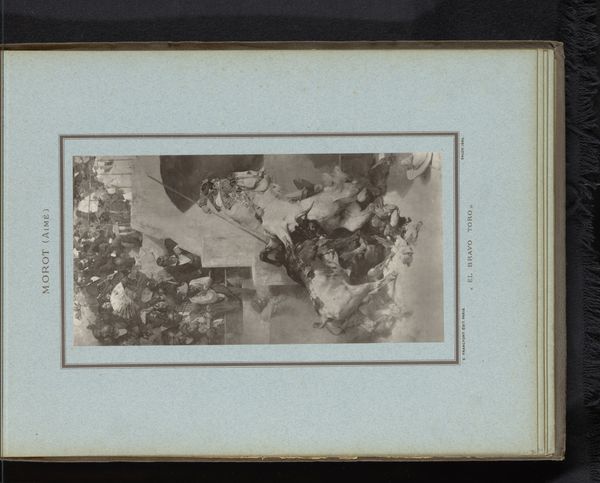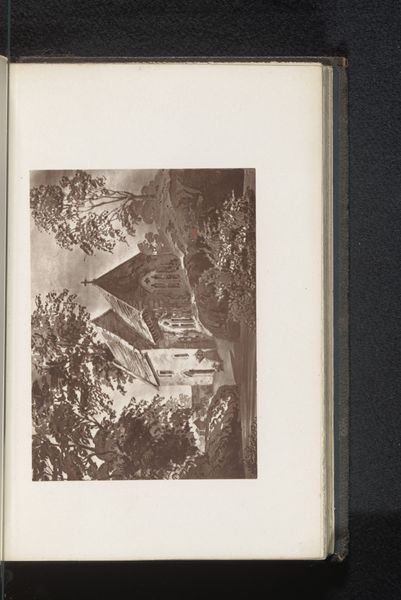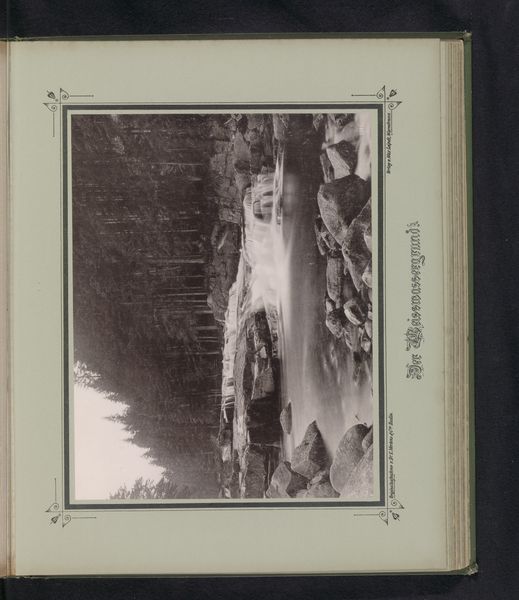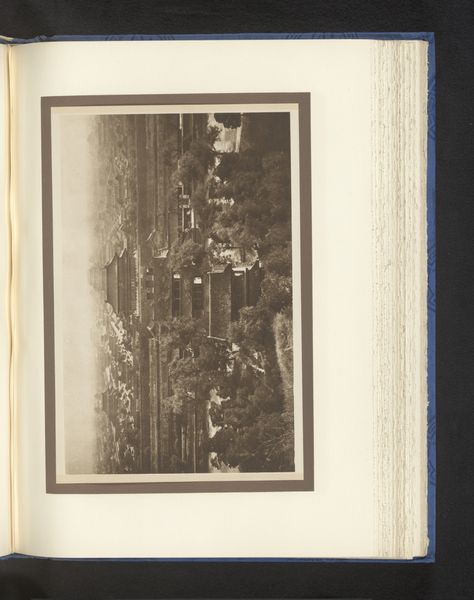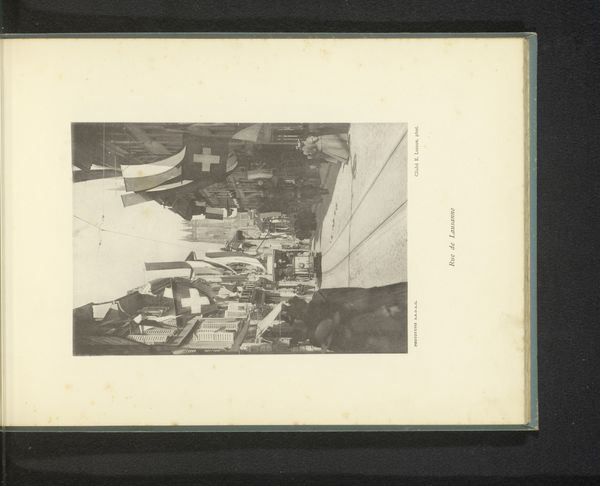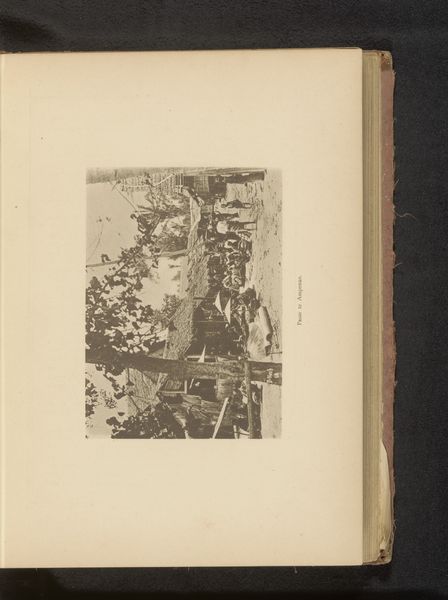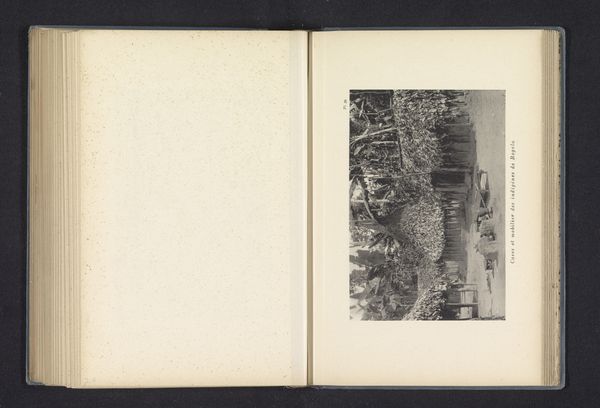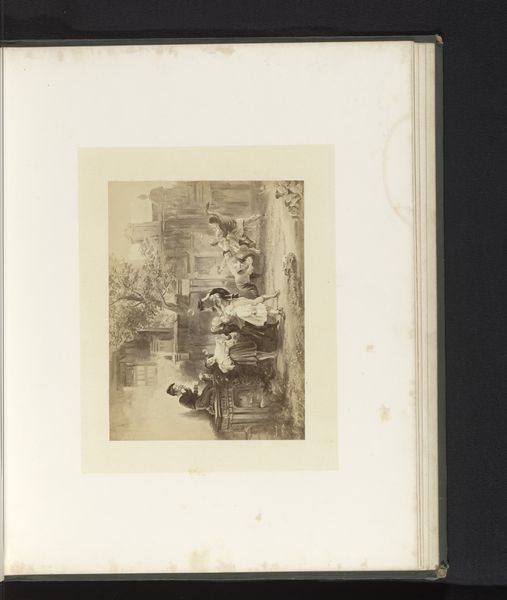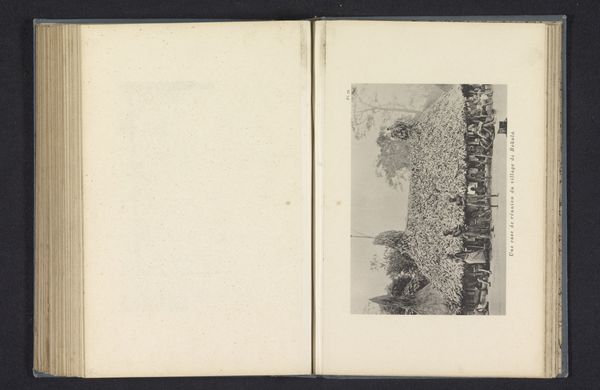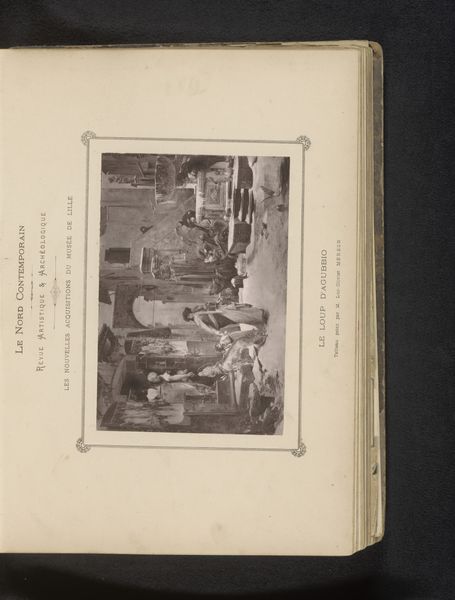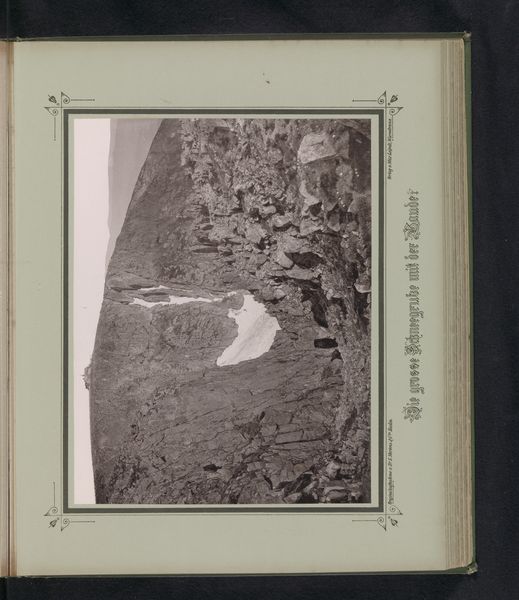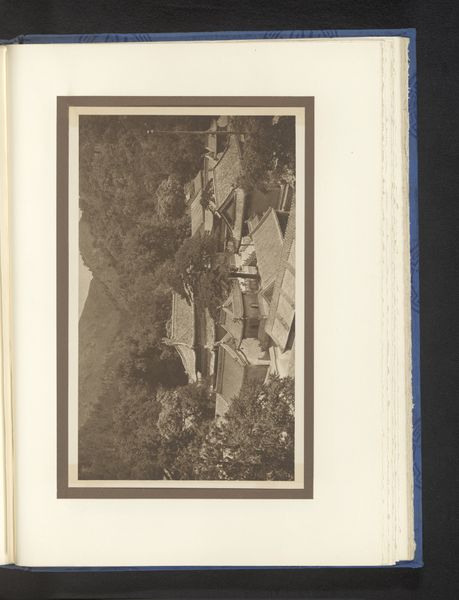
photography, gelatin-silver-print
#
16_19th-century
#
pictorialism
#
landscape
#
photography
#
gelatin-silver-print
#
building
Dimensions: height 209 mm, width 267 mm
Copyright: Rijks Museum: Open Domain
Editor: This is an ethereal gelatin-silver print by E. Mertens & Cie, created around 1891, titled "Houten gebouw nabij de Rochelfall in het Reuzengebergte," which translates to "Wooden building near the Rochelafall in the Giant Mountains." I’m immediately struck by the contrast between the blurred, almost dreamy waterfall and the defined structure of the wooden building nestled into the landscape. What do you see in this piece? Curator: Primarily, I observe a deliberate manipulation of photographic form characteristic of Pictorialism. Note how the textures – the rough-hewn wood of the building, the jagged rocks, the cascading water – are rendered with varying degrees of sharpness, creating a carefully constructed visual hierarchy. The out-of-focus waterfall, almost a white blur, serves as a dynamic counterpoint to the more static, geometric structure. Do you perceive how this arrangement guides the viewer’s eye? Editor: Yes, the contrast draws you from the background into the details of the architecture and the natural rock formations. Is that tension between the blurred and the sharply focused common in Pictorialism? Curator: Precisely. Pictorialists aimed to elevate photography to the status of fine art by employing techniques such as soft focus, unique printing processes, and hand manipulation to create images that evoked atmosphere and emotion. This particular print utilizes gelatin silver, allowing for a wide tonal range which emphasizes light and shadow – the chiaroscuro – to define the spatial relationships within the composition. Consider how the darkness of the forest presses in, framing the scene. Editor: I hadn’t thought about it in terms of creating a deliberate atmosphere. I was too busy noticing all of the visual data within. Curator: That is understandable. Pictorialism uses realism to produce art through suggestion, rather than precise duplication, asking us to feel more than to record. It's an interesting balance of aesthetic choices that we can find so engaging even today. Editor: It gives me a lot to consider; I didn’t notice so much manipulation when viewing it plainly. Thank you.
Comments
No comments
Be the first to comment and join the conversation on the ultimate creative platform.
